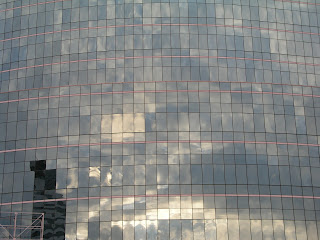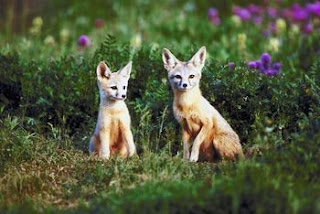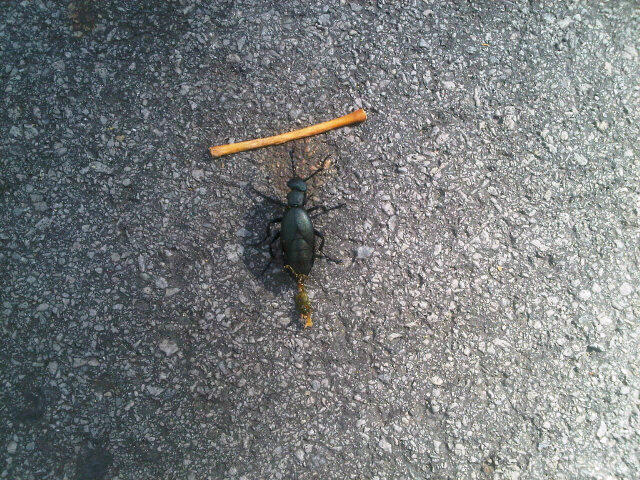Today while we were discussing energy systems the topic of wind turbines killing mass amounts of birds and bats was brought up. I researched the numbers and was quite startled, not by the amount of birds killed from turbines(440,000 only an estimate) but by the number flying into windows (1 billion pretty much confirmed). This only begs the question: Are we so convoluted by the death of a tiny percent of birds that we would throw away a life changing way of harnessing an infinite source of energy? And then by the same logic remove all windows and reflective surfaces from all tall buildings?
The bird stats are pretty recent and credible and i'll put the quotes underneath this.
julian
BACKGROUND
Window glass has enriched man’s aesthetic, cultural, physiological, and psychological well-being for at least 16 centuries. Extensive observations and experimental evidence supports the interpretation that birds simply do not see clear or reflective glass as a barrier. Consequently, sheet glass as a source of bird mortality is predicted to have increased as the size and clarity of panes have increased with time.
THE FACTS
The dead and dying victims of glass are most often hidden from view in vegetation surrounding human
dwellings. They are either killed outright, injured and struggling to recover, or quickly taken by predators and scavengers. Lethal collisions are possible wherever birds and glass mutually occur. Glass casualties have been recorded the world over at panes of all sizes in residential homes and single or multistory buildings. Fatal or injurious collisions occur when flying birds attempt to reach habitat visible on the other side of clear panes, or by attempting to reach illusions of habitat and sky reflected in the glass surface. Intensive studies at single homes reveal one out of every two strikes results in a fatality. Glass is an indiscriminate killer that takes the fit as well as the unfit of a species population. Attrition at glass is an additive rather than a compensatory avian population mortality factor.
Researchers differ in their evaluations of the magnitude of the toll that glass exacts on individual species and bird populations overall. Before much was known, annual deaths attributable to windows were hypothesized to be 3.5 million in the 1970s. Since then, extensive studies over the past three decades have been used to estimate the annual toll to be between 97 million to 975 million birds in the U.S. alone. The wide-ranging difference among these figures attests to the complexity of attempting to determine accurate amounts from a source in which every individual bird is a potential victim and sheet glass of every size is a potential killing site in the environment. The roughly 100 million to 1 billion toll is based on the assumption that 1-10 birds are killed at one building in the U.S. each year. Another independent study produced similar results, and evaluated this current range of annual mortality
figures to be reasonable. This confirming study examined records of 5,500 volunteers who optionally recorded bird strikes at windows while they counted visitors to feeding stations at their homes. To put these numbers in perspective, annual U.S. bird populations are estimated to be 20 billion in the fall, and annual glass kills are estimated to be 0.5 to 5.0% of this figure. By comparison, each year U.S. hunters are estimated to take 120.5 million birds, and free-ranging domestic cats are suspected to kill hundreds of millions to over a billion songbirds. Some researchers suggest that the overall avian mortality attributable to glass is likely to be much greater than what is attributable to cats: reasoning that cats are active predators that most often capture vulnerable prey while sheet glass is an indiscriminate killer that takes the strong as well as the weak and is astronomically more numerous than cats. Minimally, from an ethical and moral perspective, any unintended and unnatural killing associated with human presence in the environment should be addressed and reduced if not eliminated. Guilt and anxiety are common
feelings among an increasing number of people who discover an accidental fatality beneath the window of their home, workplace, or any other structure.
"Wind energy developers, in California and West Virginia, are being sued by environmental groups. A growing number of groups contend that hundreds of thousands of birds and bats are being killed every year by wind turbines, mostly at night when bats and migratory birds fly around mountain ridges where many wind farms are located.
Kelly Fuller, with the American Bird Conservancy, said, “In 2009, an expert at the Fish and Wildlife Service estimated 440,000 birds were being killed by wind turbines a year. That was before we had more growth of the industry.”
West Virginia, in the eastern U.S., is a migratory corridor for birds. It's also an important habitat for bats -- millions of which have been dying from White Nose Syndrome. The illness has brought some species to the brink of extinction. Now they face another threat."


































